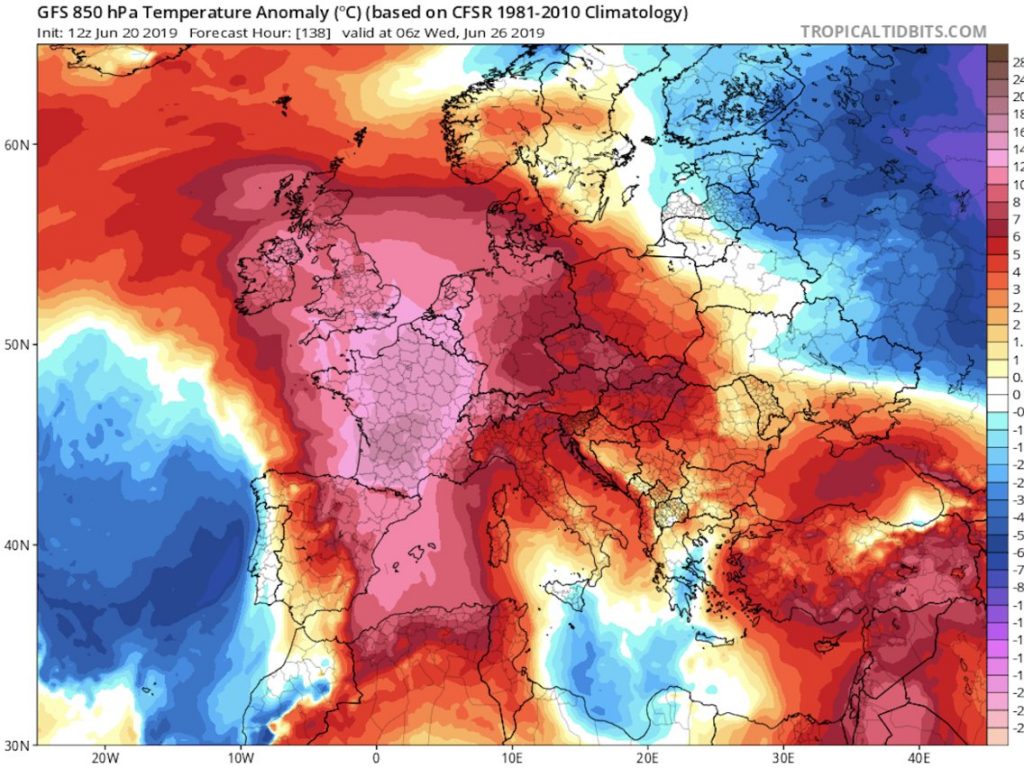Each year people travel around the globe to join business meetings and events, leaving a footprint on the environment. Are green meetings and video conferences going to become a standard to minimize the society’s catastrophic impact on climate?
One return flight between London’s Heathrow airport and New York’s John F. Kennedy generates roughly 968 kgs of CO2. One typical passenger makes 1.43 kgs of cabin waste per flight.
Let’s assume that one event attendee will use 5 single-use plates, just as many cups, and drink 3 bottles of water. Multiply it by 3 days and 2500 attendees. It gives 37 500 plates and cups plus 22 500 plastic bottles. Not to mention the excess food thrown away. In the end, an event can generate even a few tons of waste. And that’s just one against millions of meetings happening each year.
Table of Contents
Why should we focus on waste management?
The Earth’s climate has always been changing. But the last 100 years of humans’ impact on the planet have done more damage than ever.
According to NASA’s research, the current warming trend is particularly significant. Most of it is the result of human activity and proceeding at a rate that is unprecedented over decades to millennia. The greenhouse effect and global warming are now even more visible.
Just a couple of weeks ago Iceland’s Okjökull glacier literally stopped being a glacier. Its snow cover has disappeared over only 33 years. Scientists warn that 400 more glaciers will share Okjökull’s fate. Antarctica is currently losing six times more ice mass annually compared to 40 years ago. Netflix documentary series, Our Planet, shows, how all this affects both fauna and flora of the Earth.

If this is not convincing enough, hasn’t the weather been a little fussy lately?

That’s the greenhouse effect in practice. The effects of climate change cannot be reversed, but the impact of human activity can be minimized.
How do we do it?
First of all, humans should take responsibility for their actions. Their simple everyday tasks can be changed to introduce zero or fewer waste principles. From reducing the use of water and energy, through switching to reusable coffee tumblers instead of ordering take-out every morning, up to recycling all home waste.
The vast majority of business meetings can be held online instead of having to travel and gather in one place. That’s where ClickMeeting may come in handy. Other meetings and events, that cannot be moved online, can be organized in line with the idea of green meetings.
What are the green meetings?
This is not a new concept and yet, many event managers fail to introduce it. Green meetings aim at reducing as much waste generated during events as possible. The idea is for organizers to choose sustainable accommodation options, venues, or catering.
For instance, most hotels already execute green policies. They encourage their guests to re-use their towels, toiletries, and sheets, especially if they don’t plan a longer stay. This reduces the amount of water and energy that hotels use to wash linens. Add proper food management, switching to clean energy providers, and you have a sustainable hotel that provides the same value to its clients, without losing anything on service quality.
How to organize and run a green event?
Being eco-friendly, due to climate change, is becoming a must. There’s no one answer on to how to tackle it. The main principle should remain the same, though: do as much for the environment with as many resources you have. Make sure to save water, energy, plan your shopping and choose organic, instead of, over-processed food. And these are only a couple of examples.
When it comes to running events, many of them could be avoided. Vast majority concerns internal or corporate meetings, not conventions or trade shows.
According to the Events Industry Council and Oxford Economics report, only in US corporate and business meetings accounted for 53.4% of all meetings held in 2016. And since they usually don’t involve many participants, some of them can easily be organized online by using web conferencing software.
One example of successfully switching to webinars instead of traditional gatherings is Nest Bank. They introduced ClickMeeting to run internal meetings and onboarding sessions.
The bank’s offer was changing so much and so often, that it was impossible to keep all the franchisees up-to-date with the products. To keep pace, we needed a new tool and a new strategy – says Krzysztof Grodecki from Nest Bank.
Webinars were a natural choice for Nest Bank. Mr. Grodecki adds, if they had to come back to traditional stationary training sessions and meetings, it would take 10 times longer to achieve the same goals and would require additional costs, such as traveling, accommodation, venue reservation. What they did was turning ClickMeeting into an internal tool to keep all employees spread around Poland up-to-date with the bank’s offer.
Make a green meeting work
Let’s assume holding a stationary event is necessary and it cannot be done online. Organizing an eco-friendly meeting doesn’t need to be more complicated or involve reshaping the event budget completely. It also doesn’t take more time.
We’ll take it to step-by-step and see, how you can organize a sustainable event, trade show, or internal meeting, just by tweaking a couple of things.
Step 1 – choose the venue
Getting the venue that matches the budget restrictions, predicting the number of attendees, and executing a green strategy, is not a hassle, unless you’re looking at extremely remote locations. One of the key factors you should look at is the location.
Make sure the venue is close to the means of public transport. Usually, such spaces also have great connections with a variety of hotels in the area. It will encourage participants to choose it over taxis or their cars and, in turn, reduce possible air pollution.
On a side note, transportation of guests to the recent Google’s camp on climate crisis held in Sicily, Italy drew condemnation as the venue was not easily accessible. Guests, mostly celebrities and politicians, arrived in their private jets (114 of them according to Italian press), mega yachts, and expensive supercars. The event is said to have created an 800-tonne carbon footprint.
On the other hand – it did encourage discussion about humans’ impact on air pollution, and celebrities contributed to it in their way here.
Venue administrators can also provide you with information on waste collection and recycling system they have, energy-saving solutions within the building, or other environmental management programs. The more, the better.
Step 2 – encourage attendees to choose green hotels
Upon inviting attendees to the event, you may suggest different accommodation options. Go for those facilities, that offer eco-friendly solutions. Again: are they close to public transport? Are they certified with any environmental management systems, such as EU Ecolabel or Green Key? What steps do they take to save energy, water, and food? Is the hotel staff involved in environmentally friendly activities?
The good news is, sustainability has become a strong selling point for hoteliers and they like to highlight their activities for a better environment.
The renowned hotel chain, Marriott International, has introduced policies towards sustainability and the reduction of environmental footprint through its 2025 Goals program. Marriott states it wants to become a global hospitality leader that demonstrates how responsible hotel management can be a positive force for the environment. This approach is especially significant since the chain owns over 7000 properties in 131 countries and territories around the world. This makes it the third-largest hotel chain.
Step 3 – search for local catering options
Catering might be the most cumbersome aspect of organizing conferences. It also generates thousands of kilograms of waste. Ideally, look for local organic food providers to cut on transportation costs and carbon footprint. It’s a good idea to ask the participants about their food preferences in advance. Be considerate about any cultural or religious traditions when setting menus. If it’s not possible to execute due to a large number of attendees, ensure sufficient amounts of vegetarian, vegan, and dairy-free options.
Very often, the meals are served in disposable plastic boxes. However, more and more catering companies offer recyclable and non-plastic ones. Sometimes a better option is to serve single, almost sample-size portions to reduce food waste and exchange boxes for traditional plates.
When it comes to drinks, opt for filtered tap water or large dispensers. One thing you should splurge on is fair trade products: coffee, tea, and sugar. Such fair trade certifications ensure high quality of products and, this might be even more important, offer better labor conditions to farmers.
Step 4 – take care of the details
A typical day for event attendees looks something like this:
They arrive at the venue (let’s hope they do it on foot), receive a plastic name badge, get a water bottle, are given about three event flyers plus a venue map, walk around the exhibition hall and take a few more leaflets, sweets, business cards, and gadgets. At least half of those things can be eliminated.
Go paperless whenever you can. With 2500 attendees you may need to print at least 7500 pages (venue maps, event programs, etc.) that can easily be moved to an online application. It’s 15 reams of paper less and 207 kgs of CO2 savings. Let alone the costs.
Large conferences held online?
The greenest of all conferences are, of course, the online ones. It’s not impossible to hold a large conference using webinar software. Instead of planning transportation, accommodation, venues, catering, event materials, you can invite your attendees to join in the quiet of their own homes. Or offices. Huge webinars are no news for ClickMeeting. In one of our previous blog, posts you can read more about some clients that successfully ran large conferences without spending months and budgets on traditional events.
If you are willing to go green and organize your events on a brand new level, try our platform for free for 14 days.



 (6 votes, average: 4.33 out of 5)
(6 votes, average: 4.33 out of 5)




